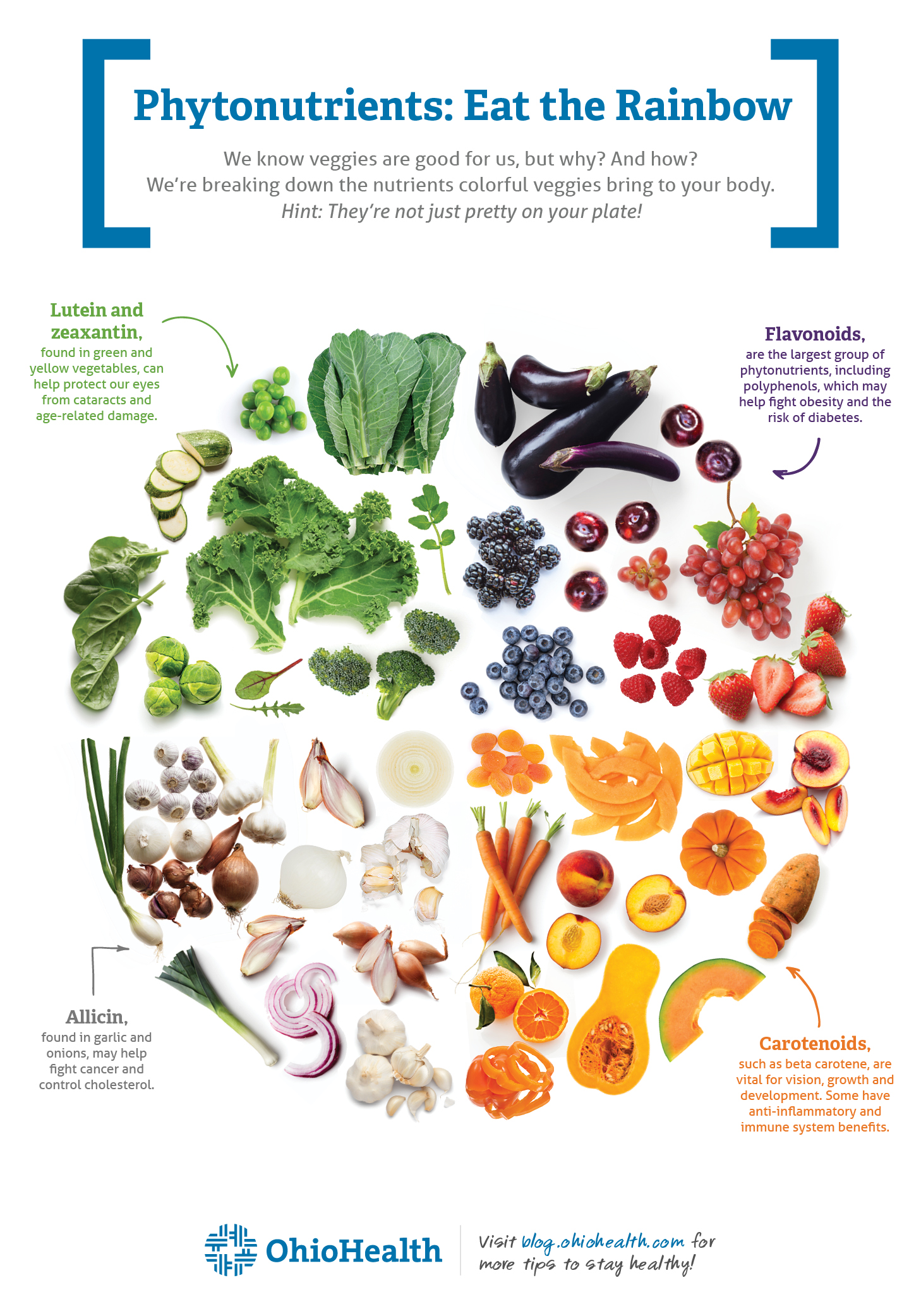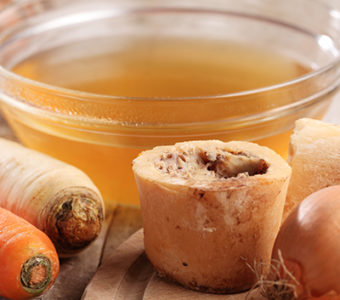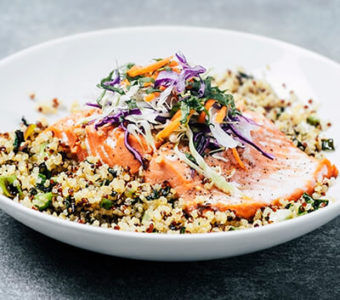
Vegetables, greens, whole grains, herbs — you know they’re good for you, but you may not know all the reasons why. You’re not alone — even scientists don’t know all the ways phytonutrients, also called phytochemicals, can benefit our health and well-being.
“Of the thousands of phytonutrients, scientists have only studied hundreds,” explains Alyssa Bixler, MS, RD, LD, CDE, registered dietitian and diabetes program coordinator at OhioHealth McConnell Heart Health Center. “This is an area of the science of nutrition where there is still much to explore. But there is promise in the power of phytonutrients to keep our cells and bodies healthy in a variety of ways.”
What Are Phytonutrients?
Phytonutrients are natural compounds that plants use for protection against germs, fungi and other threats. And there’s plenty of evidence that phytonutrients can help protect us from disease, the effects of aging and more.
Here are just a few examples:
- Carotenoids, such as beta-carotene, are vital for vision, growth and development. Some have anti-inflammatory and immune system benefits.
- Flavonoids are the largest group of phytonutrients, including polyphenols, which may help fight obesity and the risk of diabetes.
- Allicin, found in garlic and onions, may help fight cancer and control cholesterol.
- Lutein and zeaxanthin, found in green and yellow vegetables, can help protect our eyes from cataracts and age-related damage.
Eat a Rainbow
Bixler stresses that the best way to benefit is to eat many types and colors of fruits and vegetables. Adults should aim for 2 ½ cups of vegetables per day, and 1 ½ to 2 cups of fruits.
“One mistake we often make is to get stuck eating our go-to favorites day after day,” she says. “Think beyond carrots and celery. Choose other grab-and-go veggies, like cherry tomatoes, pea pods, baby cucumbers, peppers, cauliflower, broccoli or mushrooms. You can serve them with hummus, bean dip or a tablespoon of peanut butter.”
Fresh and frozen fruit and vegetables are usually better sources of phytonutrients than canned. One exception: lycopene is more easily absorbed from canned tomato products than from fresh tomatoes.
Whole grains and green tea also contain phytonutrients. Herbs are another good source that can also help make healthy foods more flavorful and interesting.
“Herbs are a great way to flavor foods without adding salt and fat,” Bixler says. “Good sources are cumin, turmeric, cinnamon, oregano and cloves.”
While supplements of many phytonutrients are available, it’s much better to get them from their natural sources. Bixler recommends talking to your doctor before using a supplement.
Make It a Lifestyle
A good rule of thumb is to fill half your plate with veggies and half with whole grains and protein. For dessert, try baked apples with cinnamon, berries or peaches with whipped cream, or pomegranate seeds. Fruit also makes a great portable snack. Keep a bowl handy, and you’ll be less tempted to grab candy or junk food.
Getting kids to eat fruit and vegetables instead of sugary and salty snacks might be a challenge, but it’s worth the trouble. Kids who are exposed to a variety of healthy foods are more likely to eat them as adults.
“Even if your kid snubs a certain food, keep trying,” Bixler says. “Research shows that it can take 20 exposures to a healthy food before they’ll try it. And be a role model. It really sets kids up for a lifetime of healthy eating — and it’s good for both of you.”
Want to talk nutrition with one of our dietitians? Give the McConnell Heart Health Center a call!





